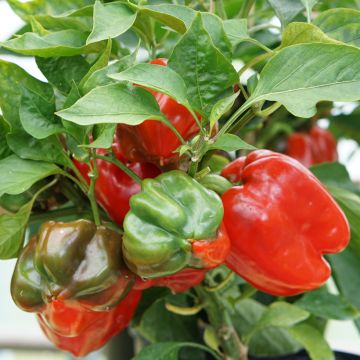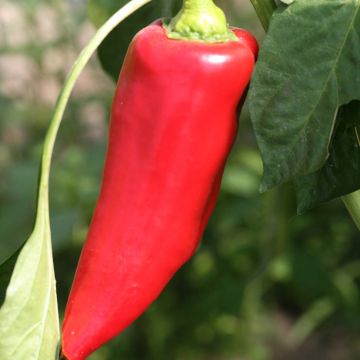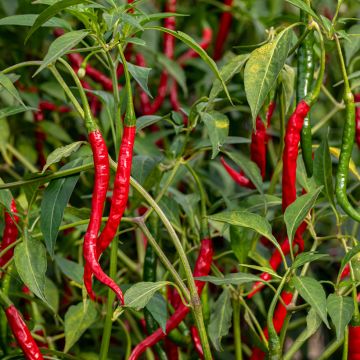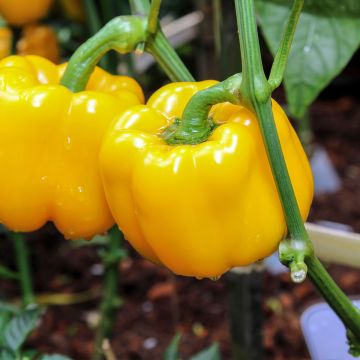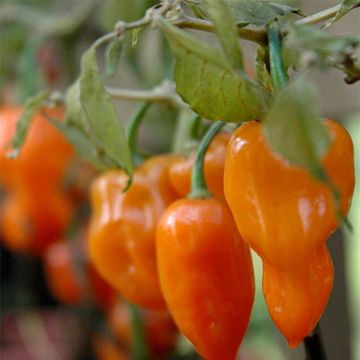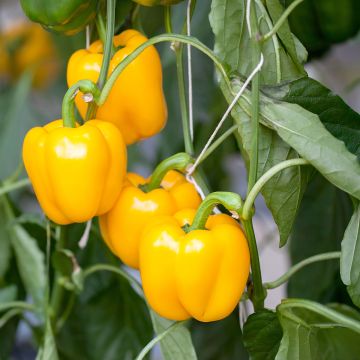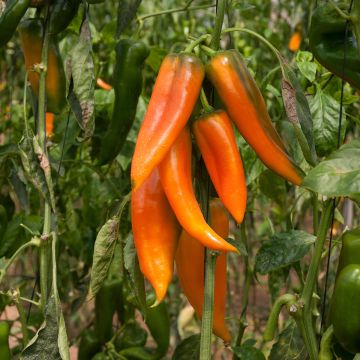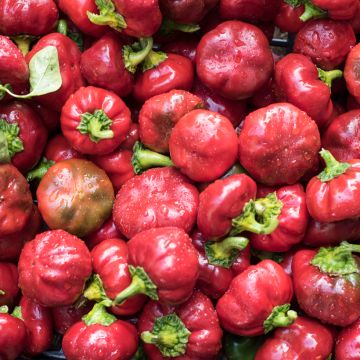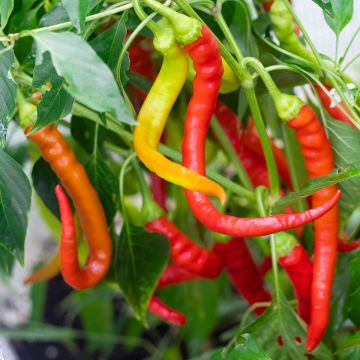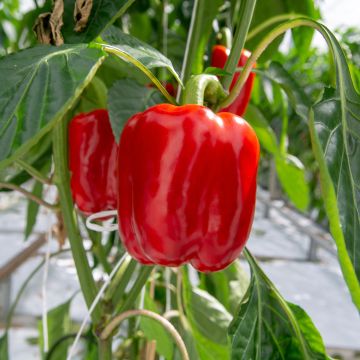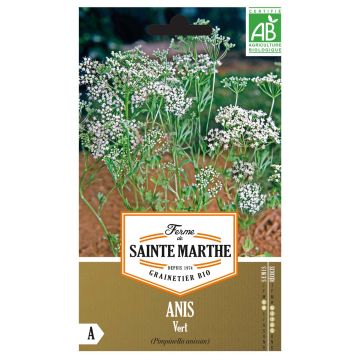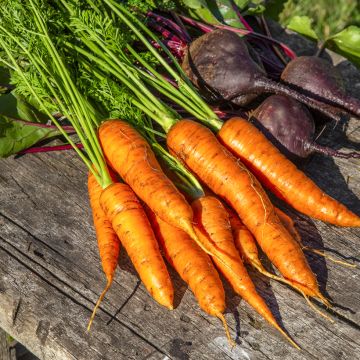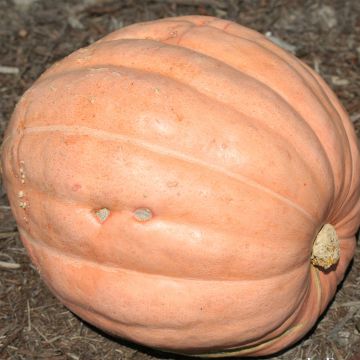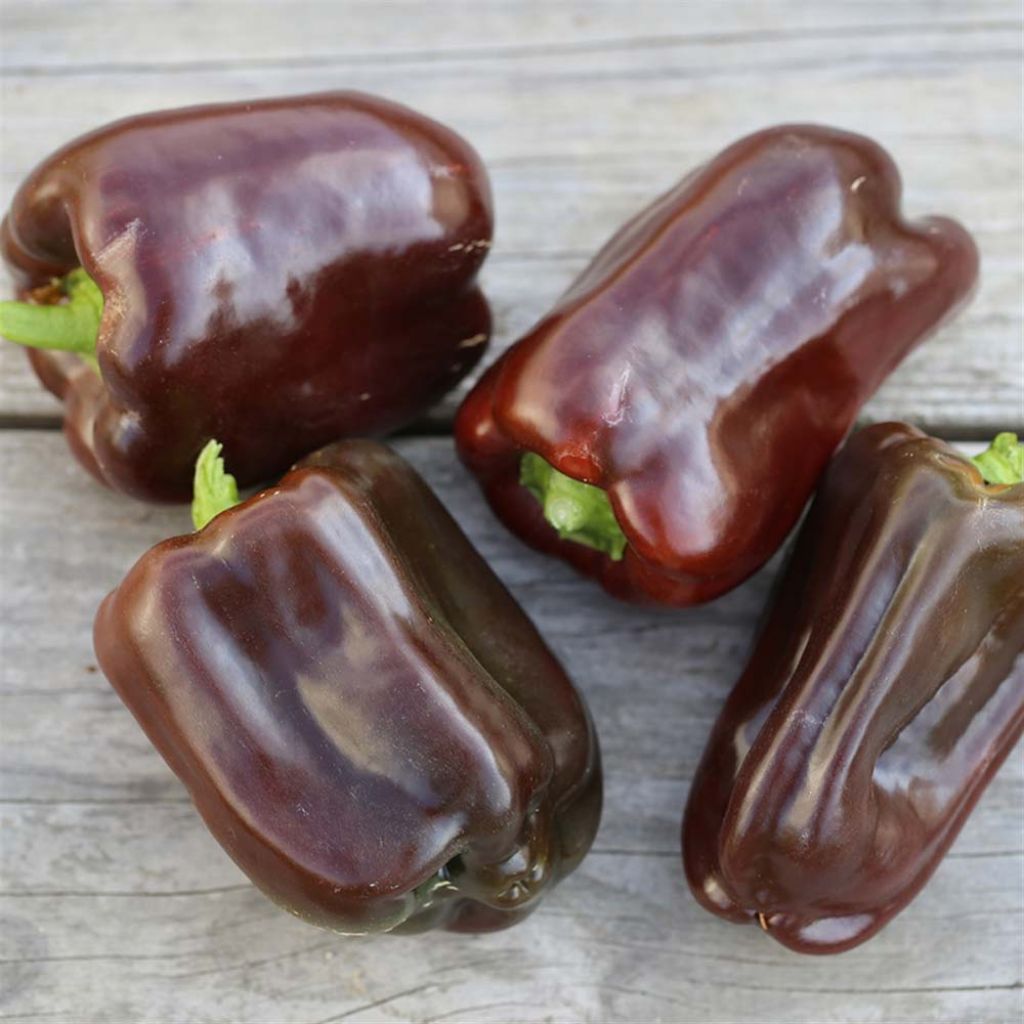

Pepper Sweet Chocolate - Ferme de Sainte Marthe untreated seeds - Capsicum annuum
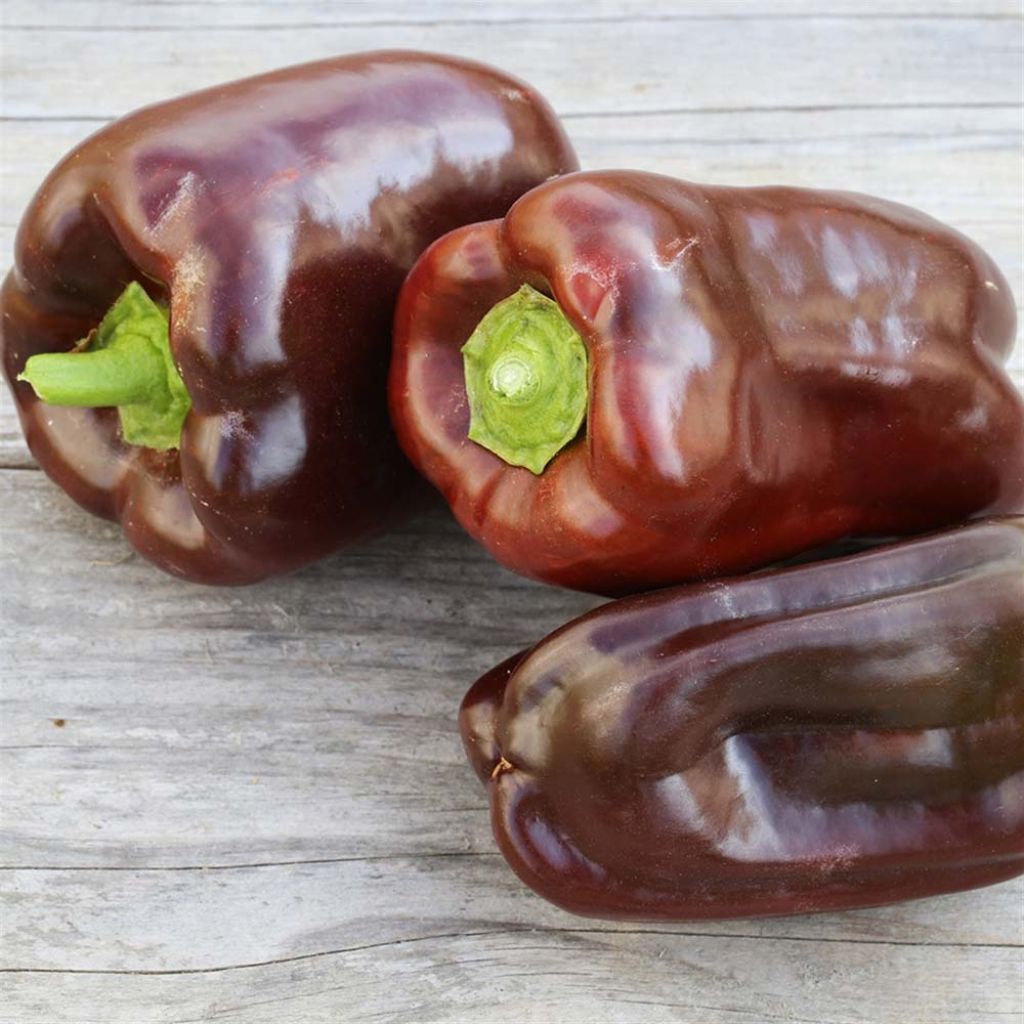

Pepper Sweet Chocolate - Ferme de Sainte Marthe untreated seeds - Capsicum annuum
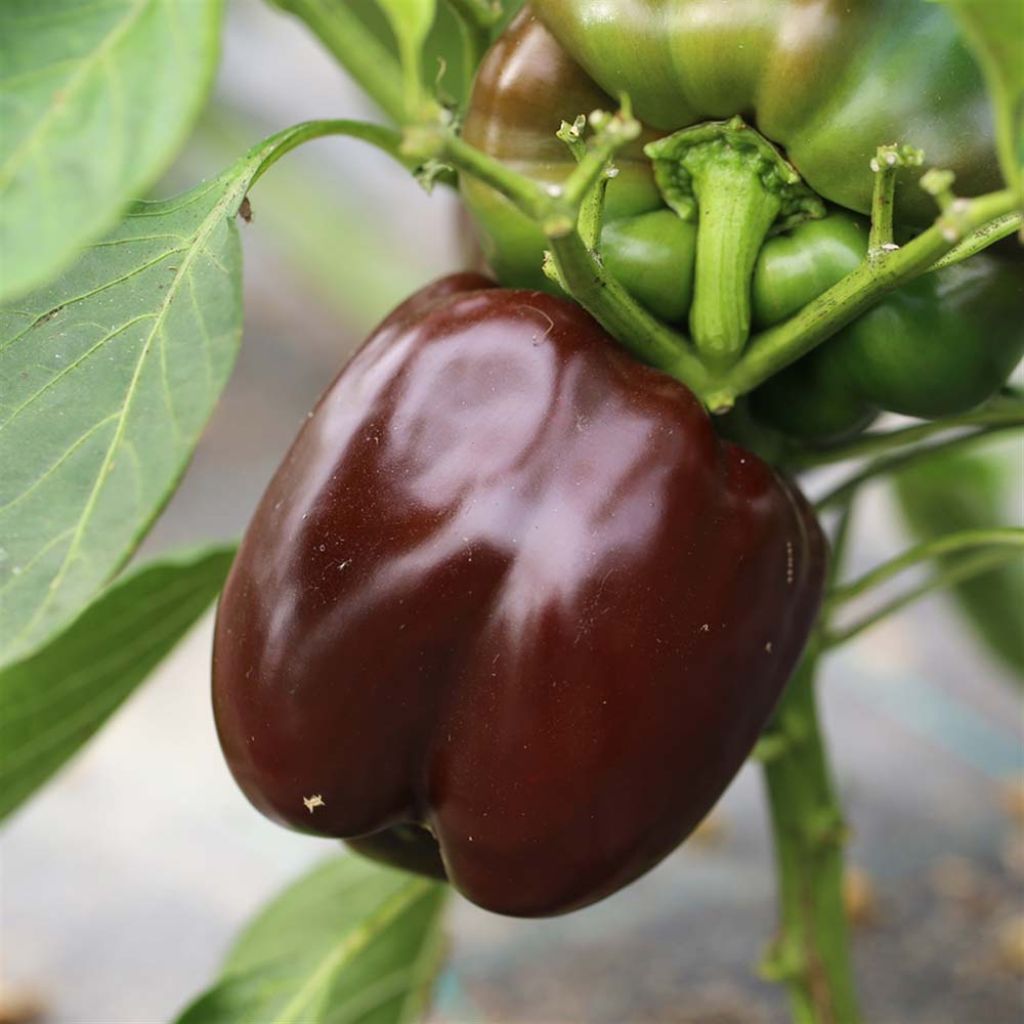

Pepper Sweet Chocolate - Ferme de Sainte Marthe untreated seeds - Capsicum annuum


Pepper Sweet Chocolate - Ferme de Sainte Marthe untreated seeds - Capsicum annuum
Pepper Sweet Chocolate - Ferme de Sainte Marthe untreated seeds - Capsicum annuum
Capsicum annuum Chocolate
Bell pepper
Special offer!
Receive a €20 voucher for any order over €90 (excluding delivery costs, credit notes, and plastic-free options)!
1- Add your favorite plants to your cart.
2- Once you have reached €90, confirm your order (you can even choose the delivery date!).
3- As soon as your order is shipped, you will receive an email containing your voucher code, valid for 3 months (90 days).
Your voucher is unique and can only be used once, for any order with a minimum value of €20, excluding delivery costs.
Can be combined with other current offers, non-divisible and non-refundable.
Why not try an alternative variety in stock?
View all →This plant carries a 6 months recovery warranty
More information
We guarantee the quality of our plants for a full growing cycle, and will replace at our expense any plant that fails to recover under normal climatic and planting conditions.
Description
The Sweet 'Chocolate' NT Pepper is a unique variety that produces beautiful elongated and fleshy fruits with dark red skin that turns chocolatey when ripe. Their flesh, sweet and sugary, can be prepared in a classic way: grilled, stuffed or as tapas. This pepper is sown early from February to May for a harvest 70 days later.
The untreated or "NT" seeds come from plants grown conventionally (often using phytosanitary products). However, they do not undergo any treatment after harvest. These seeds are allowed in organic market gardening when organic seeds are out of stock.
We have a habit of distinguishing between peppers and chillis. The pepper is a term for chilli without or almost without capsaicin, the substance that, in varying concentrations, produces a spicy or even burning effect.
Pepper belongs to the Solanaceae family and is a condiment. Its close relative is the bell pepper. Archaeological evidence shows that the Incas consumed peppers as early as 7500 BC and cultivated them as early as 3000 BC. Pepper is a perennial plant in tropical climates, but it is grown annually in our latitudes unless it has been placed in a pot to be stored indoors during the winter. The plant produces small white or mauve flowers, with anthers or seeds of different colours depending on the species.
The Spaniards discovered Pepper in the 16th century, and its use quickly spread worldwide. All regions of the world incorporate it into their culinary traditions. It is a bright red fruit that "bites when bitten," which earned it the name capsicum. All have been captivated by its taste. There are five main species, often recognisable by the colour of their flowers, among other things. These species form a bush with an upright habit and lanceolate leaves. They produce small flowers that become hollow fruit containing seeds whose colour varies depending on the variety.
Pepper is naturally rich in vitamin C, about twice as much as lemons or oranges. It is a substance that can easily evaporate and lose its content as the pepper dries out. When it is made into powder, the amount of vitamin C further decreases. However, pepper is rich in vitamin A, which increases as the fruit dries.
Pepper contains a potent alkaloid called capsaicin, which is tasteless and odourless. Capsaicin gives pepper its heat, which does not activate the taste buds; instead, it activates the heat receptors of the skin or mucous membranes, causing a burning sensation. The heat level of pepper is measured using the Scoville scale. The capsaicin content differentiates hot peppers from bell peppers. Studies show that hot peppers act as bactericides when used in dishes.
Pepper plants produce little capsaicin in their fruits if they do not have natural predators, but they produce fruits rich in capsaicin if they have enemies. This is because capsaicin is a powerful defence mechanism for the plant.
Bell peppers and hot peppers are two different types of pepper. Bell pepper is a type of pepper with little or no capsaicin. Two kinds of peppers can be used in dishes as purees or preserved as accompaniments or main dishes.
The Harvest: The time to harvest the pepper is determined by its colour at ripeness and your personal preference for heat or aroma. Some pepper varieties have an enchanting aroma that disappears once they're ripe, while others are best enjoyed while still green. Some only become tolerable once they're fully ripe. Use a small knife or your hands to pick the peppers when you need them, being careful to leave one to two centimetres of the stem intact. Keep in mind that peppers will continue to ripen even after being picked.
Preservation: To store peppers for several days, keep them in the refrigerator's vegetable drawer. If you have a large harvest and want to preserve your peppers for an extended period, there are different ways. You can store bell peppers fresh or marinate them in oil with herbs, pickle them in vinegar, or reduce them to a puree. You can find many recipes for these methods. As a last option, you can freeze your harvest. In any case, it's essential to wash and dry them thoroughly before storing or preserving them.
The Gardener's Tip: Plant radishes nearby to fight against red spider mites.
Report an error about the product description
Harvest
Plant habit
Foliage
Botanical data
Capsicum
annuum
Chocolate
Solanaceae
Bell pepper
South America
Annual
Other Pepper seeds
View all →Planting and care
Peppers are extremely easy to grow. Sunlight and heat are crucial for the success of this crop. They can tolerate any soil type but prefer rich, loose, and well-draining soil. You can add a bit of sand if the substrate is too compact.
Sowing under glass: From mid-February to May, sow indoors or in heated greenhouses in trays at around 20°C (68°F). Bury the seeds under 5 to 7 mm (0in) of 'special sowing' compost, as they need darkness to germinate. Do not use compost at this stage, as it may burn the future roots. The growth of pepper plants is rapid: the seeds germinate between 3 days and a week after sowing. This is an average. Do not discard a tray if germination has not occurred during this period, as some varieties take longer. When the plants have reached 5 to 6 true leaves, transplant them into pots that provide a little more space for their roots and begin acclimatising them to the outdoors on sunny days.
Transplanting in the open ground: Once the risk of frost has passed, usually in mid-May, transplant your plants into the open ground. Choose the sunniest and warmest spots in your garden. Planting at the base of a south-facing wall is an ideal position. Loosen the soil and dig a hole at least 3 to 4 times the volume of the plant's root system. Add some well-decomposed compost at the bottom. Place your plant, which can be buried up to the first leaves and backfill. Firmly press the soil, form a small basin around the base, and water thoroughly. Avoid watering the leaves to protect your plants from fungal diseases. If you plan to plant multiple plants, space them 60 cm (24in) apart in all directions.
Maintenance: Applying mulch around the base of your plants helps maintain some moisture and reduces the need for weeding. Pepper plants do not require a lot of watering as their root system has a taproot that searches deeply for available resources. Only water generously in case of prolonged drought. If you have chosen to grow them in pots, you can keep your pepper plants for several years by storing them in a warm and well-lit place during the off-season. In pots, the plant cannot develop as strong a taproot as it would in the open ground. Therefore, regular but moderate watering is necessary.
Seedlings
Care
Intended location
This item has not been reviewed yet - be the first to leave a review about it.
Similar products
Haven't found what you were looking for?
Hardiness is the lowest winter temperature a plant can endure without suffering serious damage or even dying. However, hardiness is affected by location (a sheltered area, such as a patio), protection (winter cover) and soil type (hardiness is improved by well-drained soil).

Photo Sharing Terms & Conditions
In order to encourage gardeners to interact and share their experiences, Promesse de fleurs offers various media enabling content to be uploaded onto its Site - in particular via the ‘Photo sharing’ module.
The User agrees to refrain from:
- Posting any content that is illegal, prejudicial, insulting, racist, inciteful to hatred, revisionist, contrary to public decency, that infringes on privacy or on the privacy rights of third parties, in particular the publicity rights of persons and goods, intellectual property rights, or the right to privacy.
- Submitting content on behalf of a third party;
- Impersonate the identity of a third party and/or publish any personal information about a third party;
In general, the User undertakes to refrain from any unethical behaviour.
All Content (in particular text, comments, files, images, photos, videos, creative works, etc.), which may be subject to property or intellectual property rights, image or other private rights, shall remain the property of the User, subject to the limited rights granted by the terms of the licence granted by Promesse de fleurs as stated below. Users are at liberty to publish or not to publish such Content on the Site, notably via the ‘Photo Sharing’ facility, and accept that this Content shall be made public and freely accessible, notably on the Internet.
Users further acknowledge, undertake to have ,and guarantee that they hold all necessary rights and permissions to publish such material on the Site, in particular with regard to the legislation in force pertaining to any privacy, property, intellectual property, image, or contractual rights, or rights of any other nature. By publishing such Content on the Site, Users acknowledge accepting full liability as publishers of the Content within the meaning of the law, and grant Promesse de fleurs, free of charge, an inclusive, worldwide licence for the said Content for the entire duration of its publication, including all reproduction, representation, up/downloading, displaying, performing, transmission, and storage rights.
Users also grant permission for their name to be linked to the Content and accept that this link may not always be made available.
By engaging in posting material, Users consent to their Content becoming automatically accessible on the Internet, in particular on other sites and/or blogs and/or web pages of the Promesse de fleurs site, including in particular social pages and the Promesse de fleurs catalogue.
Users may secure the removal of entrusted content free of charge by issuing a simple request via our contact form.
The flowering period indicated on our website applies to countries and regions located in USDA zone 8 (France, the United Kingdom, Ireland, the Netherlands, etc.)
It will vary according to where you live:
- In zones 9 to 10 (Italy, Spain, Greece, etc.), flowering will occur about 2 to 4 weeks earlier.
- In zones 6 to 7 (Germany, Poland, Slovenia, and lower mountainous regions), flowering will be delayed by 2 to 3 weeks.
- In zone 5 (Central Europe, Scandinavia), blooming will be delayed by 3 to 5 weeks.
In temperate climates, pruning of spring-flowering shrubs (forsythia, spireas, etc.) should be done just after flowering.
Pruning of summer-flowering shrubs (Indian Lilac, Perovskia, etc.) can be done in winter or spring.
In cold regions as well as with frost-sensitive plants, avoid pruning too early when severe frosts may still occur.
The planting period indicated on our website applies to countries and regions located in USDA zone 8 (France, United Kingdom, Ireland, Netherlands).
It will vary according to where you live:
- In Mediterranean zones (Marseille, Madrid, Milan, etc.), autumn and winter are the best planting periods.
- In continental zones (Strasbourg, Munich, Vienna, etc.), delay planting by 2 to 3 weeks in spring and bring it forward by 2 to 4 weeks in autumn.
- In mountainous regions (the Alps, Pyrenees, Carpathians, etc.), it is best to plant in late spring (May-June) or late summer (August-September).
The harvesting period indicated on our website applies to countries and regions in USDA zone 8 (France, England, Ireland, the Netherlands).
In colder areas (Scandinavia, Poland, Austria...) fruit and vegetable harvests are likely to be delayed by 3-4 weeks.
In warmer areas (Italy, Spain, Greece, etc.), harvesting will probably take place earlier, depending on weather conditions.
The sowing periods indicated on our website apply to countries and regions within USDA Zone 8 (France, UK, Ireland, Netherlands).
In colder areas (Scandinavia, Poland, Austria...), delay any outdoor sowing by 3-4 weeks, or sow under glass.
In warmer climes (Italy, Spain, Greece, etc.), bring outdoor sowing forward by a few weeks.































